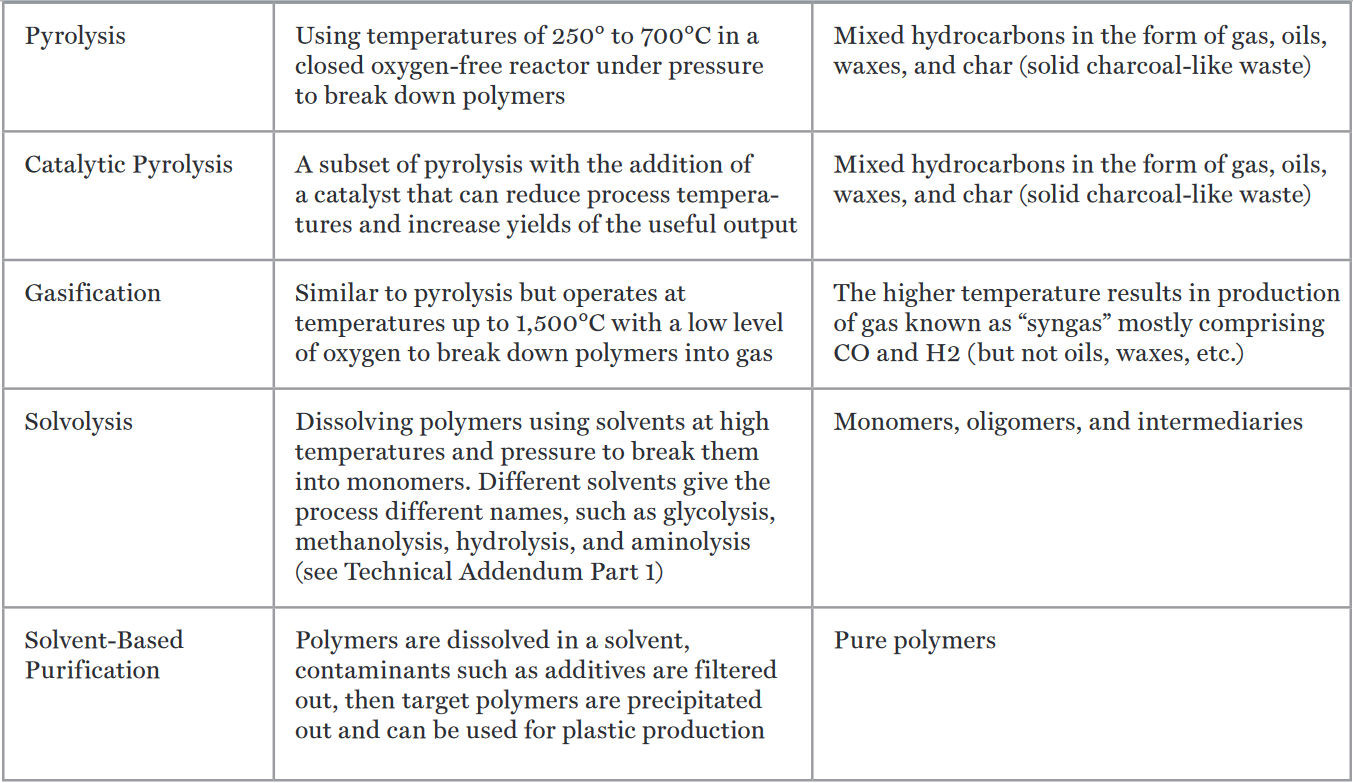Chemical Recycling: A Dangerous Deception
Why Chemical Recycling Won’t Solve the Plastic Pollution Problem
For more details, please read Chemical Recycling: A Dangerous Deception, published by Beyond Plastics and The International Pollutants Elimination Network (IPEN) in October 2023.
KEY FINDINGS
When the report “Chemical Recycling: A Dangerous Deception” was published in October 2023, there were 11 constructed facilities in the U.S. Three of these facilities have since closed: Regenyx in Oregon and Fulcrum in Nevada, and New Hope in Texas.
Some of the remaining eight facilities are not operating at full capacity. Even if they were, the remaining nine facilities could only process 1.1% of all U.S. plastic waste.
Building these facilities is expensive, costing up to half a billion dollars per plant, with significant public subsidies.
There is minimal production of actual recycled plastic: Three of the remaining eight plants have a stated purpose of only making feedstock for plastic production. Two only make fuels, and four make a combination of fuels, chemicals, and plastic feedstocks.
Seven of the remaining eight plants are located in environmental justice communities.
Some plants have experienced fires and explosions.
When the “Dangerous Deception” report was published in October 2023, it was understood that there were an estimated 13,000 chemical additives used in making plastics — 3,200 of which were known to be “substances of potential concern based on their hazardous properties, including carcinogenicity, mutagenicity, reproductive toxicity, endocrine disruption, and ecotoxicity to aquatic organisms (UNEP 2023). Those numbers have increased dramatically. We now know that about 16,000 chemicals are used in making plastics. More than a quarter of them (4,200) are known to be harmful to human health and/or the environment, while even more have not yet been studied (PlastChem, 2024). Toxic chemical additives make much post-consumer resin unsuitable for food-grade uses (Environment and Climate Change Canada, 2021.)
CHEMICAL RECYCLING PROCESSES
Chemical recycling processes of the eight remaining plants:
Six use pyrolysis (Alterra Energy, Braven Environmental, Brightmark, ExxonMobil, Nexus Circular, and Prima America).
One uses gasification (Eastman).
One uses solvents (PureCycle).
One uses solvolysis (Eastman).
(The total adds up to nine because Eastman has two separate processes.)
GENERATION OF HAZARDOUS WASTE
Hazardous wastes produced by chemical recycling include polycyclic aromatic hydrocarbons (PAHs), dioxins and furans, persistent organic pollutants (POPs), volatile organic compounds (VOCs), and heavy metals.
Two of the nine remaining plants are classified by the U.S. Environmental Protection Agency as large-quantity generators of hazardous waste (Alterra and Braven), while one is classified as a small-quantity generator (PureCycle).
NOT MEETING PROCESSING CAPACITY
The combined annual capacity of the eight remaining plants is about 400,000 tons of plastic waste, or about 1.1% of the U.S. plastic waste generated annually (36 million tons).
A BURDEN TO ENVIRONMENTAL JUSTICE COMMUNITIES
Using the U.S. EPA’s Environmental Justice Tool:
Six of the remaining eight plants are located in areas with lower-than-average income.
Three of the remaining eight plants are located in areas with higher-than-average concentrations of people of color.
MORE RESOURCES
ISSUE BRIEF: More Recycling Lies: What the Plastics Industry Isn't Telling You About "Chemical Recycling" | NRDC | March 2025
REPORT: Chemical Recycling: A False Promise for the Ohio River Valley | Ohio River Valley Institute | July 2024
MEMO: The Fraud of Advanced Recycling | Center for Climate Integrity | April 2024
ISSUE BRIEF: Recycling Lies: “Chemical Recycling” of Plastic Is Just Greenwashing Incineration | NRDC | February 2022
FACT SHEET: “Chemical Recycling” Is Not Recycling: The Plastic Industry Is Greenwashing Incineration | NRDC | September 2022
FACT SHEET: El “Reciclaje Químico” No Es Reciclaje: La Industria Del Plástico Hace Un “Lavado Verde” (Greenwashing) Acerca De La Incineración | NRDC | Septiembre 2022
Updated: May 2025



